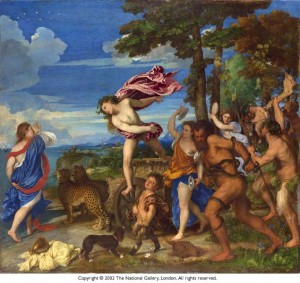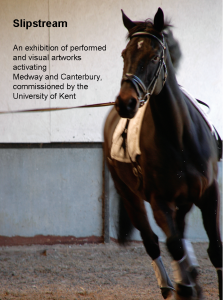 One of the more intriguing acts to appear at this year’s Lounge on the Farm was the Television Personalities. Led by sole surviving original member Dan Treacy, the nearest the Television Personalities got to fame was the 1978 song ‘Part Time Punks’, which gently poked fun at the suburban and provincial punks who walked down the King’s Road where they ‘try and look trendy’ but ‘all look the same’. The part time punks are funny because they get being cool wrong.
One of the more intriguing acts to appear at this year’s Lounge on the Farm was the Television Personalities. Led by sole surviving original member Dan Treacy, the nearest the Television Personalities got to fame was the 1978 song ‘Part Time Punks’, which gently poked fun at the suburban and provincial punks who walked down the King’s Road where they ‘try and look trendy’ but ‘all look the same’. The part time punks are funny because they get being cool wrong.
They go to Rough Trade because ‘They wanna buy the O-Level single/ or “Read About Seymour”’, but end up buying a Lurkers record instead because it’s pressed in red vinyl. To translate, the O-Level were an obscure independent label punk band (which, amusingly enough, also featured Dan Treacy) and ‘Read About Seymour’ was a single by the then super-cool art-punk heroes Swell Maps – both of which were far cooler and more exclusive than the gumbie-punk band The Lurkers, who were kind of what The Ramones might have been like had they come from, er, Uxbridge.
32 years later, the Television Personalities are playing the Cowshed, the biggest stage at Lounge on the Farm, in an unpopular afternoon slot. The name of the stage is quite literal – it’s called ‘the Cowshed’ because it’s in a cavernous cowshed, which could comfortably fit two or three thousand people in to the see the band. Sadly, no more than about thirty have turned up to see Dan Treacy’s crew, including me, my wife, and my two sons. There’s a thin crust of us lining up along the barrier at the front of the stage, most of us with fond memories of ‘Part Time Punks’, and a few random punters who hang back from the stage, watching the band out of idle curiosity.
My wife Jacqui leaves after a few numbers, later describing it as ‘a bit of a car crash’, and takes our younger son, Tom, with her to find more suitable entertainment elsewhere. I stay to watch with our older one, Joe, who’s 13. I suspect he’s held more by loyalty to me than by the music.
At least one of the two guitars has at least one string out of tune, but that’s the least of the problems. Treacy looks simply bewildered on stage, confused but amused at being there. Wearing a faded shirt and a beanie hat, he gives the impression that he’s been living rough for the last decade or so, although the current bands he references in his between-songs banter suggests he’s at least been in a homeless shelter with internet access. It’s not so much that his voice is out of tune, it’s more that it’s not aware that there was a tune there in the first place. In their one almost-famous song, ‘Part Time Punks’, he forgets the words in the third verse and repeats some lines from an earlier one.
But there’s something curiously moving about hearing him sing a song based on an idea of cool that dates from a period of maybe two weeks in 1978. And there’s something curiously entertaining about Treacy’s bewilderment. He just seems to say whatever comes into his head. He notices one of the mechanised moving spotlights on the stage. ‘What’s that?’ he asks, grinning. ‘It looks like a monkey!’ Later, he goes up to it and holds the microphone up to it, as if expecting it to sing.
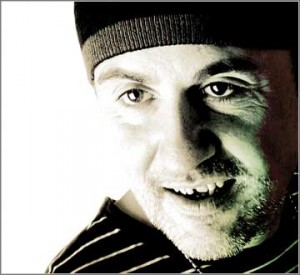 On closer inspection, the other three musicians in the band are extremely good, constantly watching him and timing what they do to accommodate his spontaneity and eccentricity. Treacy’s definitely singing to the desultory crowd semi-gathered in front of him. It’s unnerving when he catches your eye, because you can see he’s really looking at you with his hooded eyes, taking you in, and it’s hard to tell whether it’s real contempt that he’s radiating with his stare. Like Billy Childish, he seems entirely unselfconscious about the experience of being on stage under the gaze of a bunch of strangers.
On closer inspection, the other three musicians in the band are extremely good, constantly watching him and timing what they do to accommodate his spontaneity and eccentricity. Treacy’s definitely singing to the desultory crowd semi-gathered in front of him. It’s unnerving when he catches your eye, because you can see he’s really looking at you with his hooded eyes, taking you in, and it’s hard to tell whether it’s real contempt that he’s radiating with his stare. Like Billy Childish, he seems entirely unselfconscious about the experience of being on stage under the gaze of a bunch of strangers.
Jacqui’s right about it being a car crash, but I’d modify her assessment and say it’s an entertaining car crash. At one point, Treacy breaks his plectrum, and throws it out for a lucky punter to keep as a memento. Fittingly, it falls short of the, for want of a better word, crowd, and lands behind the barrier. I wonder whether it’s just my prior knowledge of the band that’s making this entertaining, but at the end, Joe asks me to get the one bouncer assigned to the gig to retrieve the plectrum for his collection of special things, and when we get back from the festival he gets me to load ‘Part Time Punks’ onto his iPod.


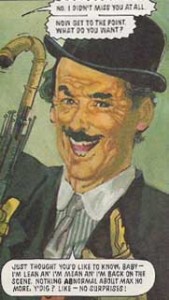
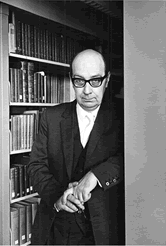 Both these ideas are crucial, I think, to understanding part of the nature of artistic inspiration: there is often little choice in the nature of the poem or music the artist is complled to write, and their experience is key. The composer Jonathan Harvey also picks up on this in his Music and Inspiration, where he writes that “only forms of experience that have a particular resonance for [the artist] will contribute to the artistic process” (1990:40).
Both these ideas are crucial, I think, to understanding part of the nature of artistic inspiration: there is often little choice in the nature of the poem or music the artist is complled to write, and their experience is key. The composer Jonathan Harvey also picks up on this in his Music and Inspiration, where he writes that “only forms of experience that have a particular resonance for [the artist] will contribute to the artistic process” (1990:40). The use of the cigarette has several functions. Apart from allowing the camera to track round the various crewmembers as it follows the passage of the cigarette from hand to hand, it contrasts feelings of ease with those of tension. DJ casually removes his cigarette to inject Dr. Weir in preparation for the gravity-tank, which contrasts with Weir’s apprehension as he admits suffering from claustrophobia. Smitty smokes as a relaxation after fighting to bring the ship through turbulence, but his smoking also betrays his nervousness on hearing the real reason for the mission in Weir’s briefing. It also forms part of DJ’s own character, combining with his reticence and underlying tension, to portray an individual on the verge of a breakdown.
The use of the cigarette has several functions. Apart from allowing the camera to track round the various crewmembers as it follows the passage of the cigarette from hand to hand, it contrasts feelings of ease with those of tension. DJ casually removes his cigarette to inject Dr. Weir in preparation for the gravity-tank, which contrasts with Weir’s apprehension as he admits suffering from claustrophobia. Smitty smokes as a relaxation after fighting to bring the ship through turbulence, but his smoking also betrays his nervousness on hearing the real reason for the mission in Weir’s briefing. It also forms part of DJ’s own character, combining with his reticence and underlying tension, to portray an individual on the verge of a breakdown.